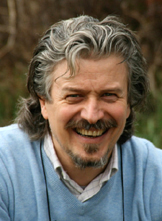
by Massimo Mangialavoripublished in Spectrum of Homeopathy 2/2010 |
Praxis Volumes 1 and 2Praxis Volumes 1 and 2
Building on Hahnemannian principles, Massimo Mangialavori presents a complete methodology for homeopathic medicine, in which he offers a new approach to epistemology, literature, research, case-taking and analysis. The method incorporates concepts from various humanities and from the natural and social sciences. Volume one explains Mangialavori’s methodolgy in detail; Volume two serves as a materia medica of the homeopathic Drug family, while demonstrating the application of the method.
Massimo Mangialavori’s latest work is valuable medicine for all homeopaths. Simply reviewing it has already enriched and sharpened my practice. It is written perceptively, with careful attention to detail, yet never loses sight of the “big picture”, and it requires a comparable intelligence on the part of the reader. Most of all, it is a philosophy, beginning with the basics, and reshaping them according to the needs of our own time, in a way that makes logical and practical sense.
Its subtitle, “The Search for Coherence in Clinical Phenomena”, is its guiding purpose: to find a deeper, more meaningful similitude between remedy and patient than any list of unrelated symptoms in a Repertory can provide, such that its various symptom-elements fit into and indeed are derived from a coherent whole; indeed, the “essence” that Kent and Vithoulkas sought, and that Scholten and Sankaran are now seeking. It is Massimo’s way of discovering that unity and of describing and understanding it once found, that is uniquely his own.
His “Method of Complexity” is so named because it includes anthropology and folk medicine, physiology, biochemistry, toxicology, classical homeopathy, and the art of clinical medicine, which ties them all together and arises from acquaintance with human nature more than book learning. Massimo differs from other teachers chiefly in this multi-systems approach, his quest for resonance and corroboration on so many levels, and his insistence that no one method of case-taking or remedy study will cover every case, that homeopathy is an art to be experienced anew with every case, and is never complete.
His first great heresy is that provings are not the best source for materia medica study, because they yield vast amounts of information, in long lists of detailed symptoms, whereas what the student needs to know is how important these symptoms are for prescribing the remedy. Reliable remedy information adequate for prescribing thus requires some system for organizing and prioritizing data. Massimo prefers cured cases, because they alone provide the richness and context that allow us to see the whole of the remedy in the whole of the patient, to connect the threads that led him to prescribe it, and to grasp the analogy with other patients needing the same remedy. These connections he calls “themes”, and from them, rather than disembodied symptoms, he builds his materia medica.
Themes emerging from cured cases also provide the ideal framework for organizing the symptom-data that provings generate, which then in turn can be used to confirm, refute, or modify the themes. Materia medica study is thus an ongoing process of integration, not a rote memory exercise. The result is a rewriting and re-organizing of the Repertory itself on thematic grounds, a monumental task that will require the collaborative efforts of a whole generation of dedicated homeopaths.
“Characteristic” themes, while distinctive of the remedy and often present, are not always so because they are limited to certain stages in its evolution, like acute inflammation for Belladonna, which occurs mainly in childhood, or to opposite polarities, depending on whether the patient is in a compensated or decompensated state. “Fundamental” themes are “essential, structural components of the remedy”, “nearly always present”, and provide the ultimate basis of its similitude. Thus the theme of “Isolation” in Camphora turns out to be fundamental to all the “Drug” remedies, while “Sensitivity to cold”, its famous keynote, is characteristic of only its most decompensated cases: a typical compensated patient might actually defy the cold. This kind of nitty-gritty scholarship is everywhere in the book, and is a thing of beauty. His elucidation of themes is masterful and easy to grasp, although it makes their actual discovery look easier than it is.
His concept of the Homeopathic Family is uniquely his own. Scholten and Sankaran identify remedy “families” taxonomically, whereas Massimo’s approach, based on shared fundamental themes, begins with a polycrest as the best-known remedy of a biological or chemical group, like Lachesis for the snakes, and identifies common themes in others taxonomically related to it. He then adds other remedies with the same themes but different taxonomy, often “small” and unfamiliar, i. e., underrepresented in the literature.
In Volume II, I marvel at how he induces his patients to confide in him as they do. The Method of Complexity aims to identify the patient’s basic adaptive strategies, often exhibited in physical symptoms no less than mental, so that the distinction between them evaporates. The emphasis is on facilitating a free-flowing narrative, tolerating the silences, trusting the essence to reveal itself spontaneously, without trying to force it in a certain direction; and recognizing the theme there, without having to amass as much data as possible.
The cases are beautifully presented and are gems of materia medica writing. Each remedy is introduced with a brief scholarly essay on natural history, folk medicine, pharmacology, toxicology, and homeopathic characteristics, so the narratives emerge from this background. Many conclude with commentary by Dr. Giovanni Marotta, Massimo’s long-time mentor, collaborator, and friend, almost an alter ego, whose more reflective style is nevertheless so perfectly attuned to the method which they created and developed together that it adds further richness and in no way detracts or distracts from the whole.
I have no doubt that this work will change how homeopathy is taught and practiced, both now and in future. |



 2.733.386 customers from 193 countries
2.733.386 customers from 193 countries








